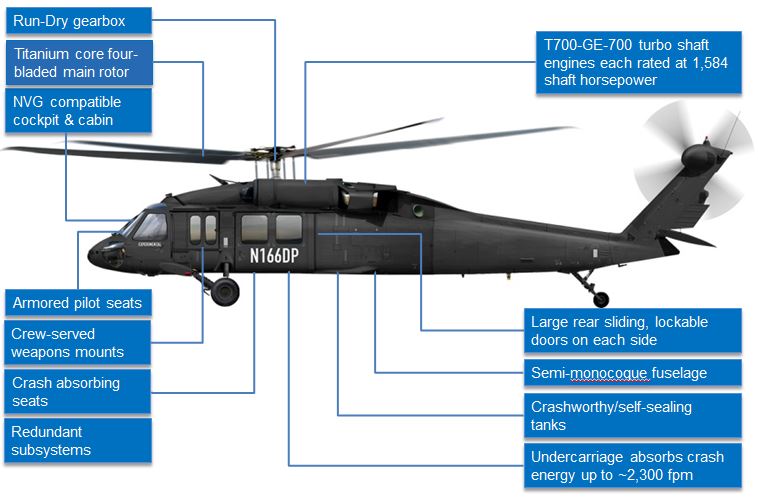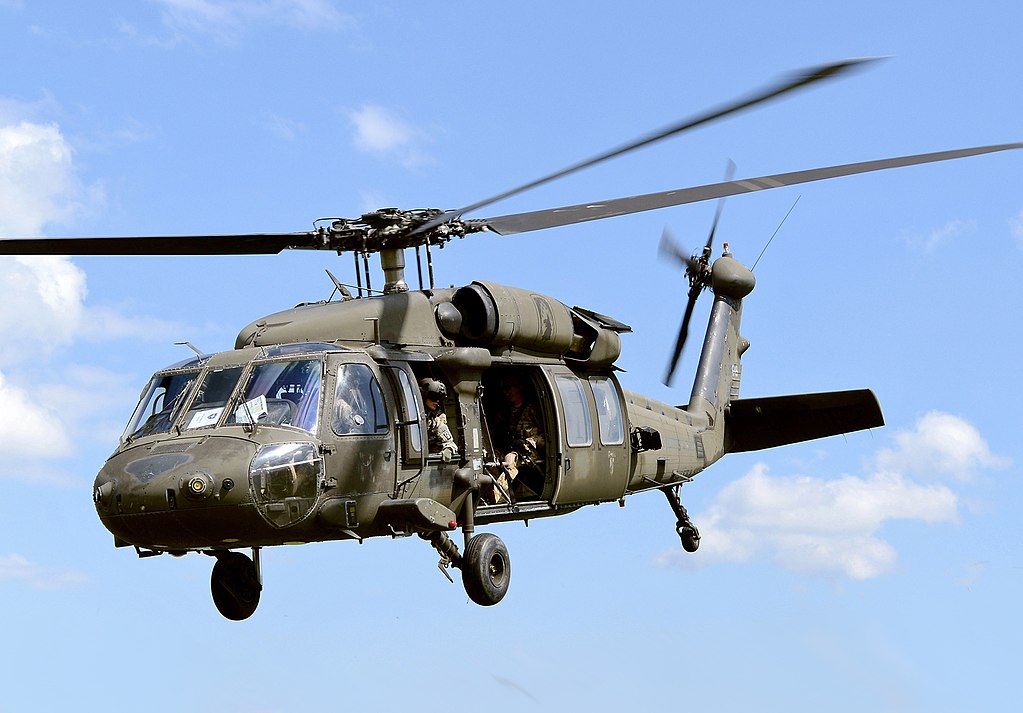Why the UH 60 Remains Among one of the most Trustworthy Helicopters in Service Today
UH-60: Developments in Modern Helicopter Style
The UH-60 helicopter stands as a standard in modern aeronautics, showcasing considerable improvements in style and innovation that cater to the evolving demands of army operations. As we explore the development and essential technologies of the UH-60, it comes to be important to think about just how these developments influence not only present applications yet also the future landscape of helicopter style.

Evolution of the UH-60
The advancement of the UH-60 Black Hawk helicopter stands for a substantial landmark in aerospace engineering and military air travel. Introduced in the late 1970s, the UH-60 was made by Sikorsky Aircraft to meet the United States Army's demand for a versatile utility helicopter with the ability of doing a variety of objectives. Its design highlighted rate, ability to move, and longevity, establishing new standards for functional efficiency.
The UH-60 features a distinct four-blade rotor system, which boosts lift and stability, enabling it to operate successfully in diverse environments. Its airframe is built from innovative composite products, adding to a decrease in weight while preserving architectural honesty. The helicopter's layout also incorporates improved aerodynamics, which enhances gas performance and enhances variety.
Over the years, the Black Hawk has actually undergone several upgrades to enhance its capabilities, including improved engines, advanced flight control systems, and modular systems for easy maintenance and adaptability. The helicopter's capability to perform missions ranging from troop transportation to medical evacuation has actually solidified its function as a foundation of U.S. army procedures. The UH-60 Black Hawk remains a prime example of how development in helicopter style can considerably affect army performance and operational flexibility.
Advanced Avionics Systems
Innovations in avionics systems have transformed the capacities of modern helicopters like the UH-60 Black Hawk, improving operational efficiency and situational recognition (UH 60). The assimilation of advanced avionics enables boosted communication, navigation, and trip administration, making the UH-60 extra flexible in varied goal profiles
One of the key functions is the advanced electronic cabin, which utilizes multifunction displays that offer real-time information, ensuring pilots have instant access to vital trip info. This streamlining of information lessens pilot work and improves decision-making processes during complex procedures. Furthermore, the unification of general practitioner and inertial navigating systems allows accurate positioning and path planning, improving goal implementation in challenging settings.
Moreover, advanced avionics systems enhance interaction capacities through safe information links and voice interaction systems, enabling smooth coordination with ground pressures and other aircraft. The combination of automated flight control systems even more adds to boosted security and control, specifically in damaging weather or during low-altitude maneuvers.
Engine and Performance Enhancements
Engine efficiency in modern-day helicopters has taken a considerable leap onward, driven by developments that enhance dependability, power, and effectiveness. The UH-60 Black Hawk, for circumstances, makes use of the T700-GE-701C engine, which includes a dual-channel, full-authority digital engine control system.
Additionally, the combination of engine wellness surveillance systems permits real-time diagnostics and anticipating maintenance, substantially improving operational reliability. These systems not only sharp crews to potential concerns prior to they come to be vital however also assist in much more reliable maintenance organizing, thereby minimizing downtime.

Materials and Structural Innovations
Recent growths in materials and structural style have actually transformed modern-day helicopter building and construction, boosting both efficiency and sturdiness. The intro of innovative composite products, such as carbon fiber strengthened polymers, has actually dramatically reduced weight while preserving architectural honesty. This change not just improves gas efficiency i loved this yet also raises haul capacity, allowing helicopters like the UH-60 to carry out more diverse goals.
Furthermore, advancements in aluminum alloys and titanium elements have contributed to enhanced resistance to rust and fatigue, prolonging the life-span of crucial airframe elements. The tactical use these products has actually led to a decrease in upkeep requirements and boosted overall operational readiness.

Moreover, the assimilation of computer-aided design (CAD) and additive production technologies has made it possible for extra intricate geometries and light-weight frameworks, optimizing the wind resistant efficiency of helicopter designs. These innovations promote quick prototyping and manufacturing, permitting manufacturers to respond swiftly to developing mission needs.
Safety and Survivability Attributes
Security and survivability features in modern helicopter layout have actually become paramount, reflecting Going Here the enhancing needs for objective efficiency in challenging settings. The UH-60 Black Hawk, a noteworthy example, integrates advanced modern technologies to boost crew and passenger defense.
The helicopter additionally uses a ballistic security system, which consists of armored team seats and crucial systems protecting, decreasing vulnerability to tiny arms fire and shrapnel. Boosted situational recognition is achieved via innovative avionics and sensing unit modern technologies, enabling pilots to discover and prevent dangers efficiently.
Additionally, the assimilation of redundancy in critical systems-- such as dual engines and numerous flight control channels-- ensures ongoing procedure even if one system fails. The UH-60 is outfitted with innovative emergency situation flotation protection devices, boosting survivability in water touchdowns. Collectively, these functions not only improve the safety of employees but likewise increase objective success prices in hostile settings, demonstrating the commitment to excellence in helicopter layout.
Conclusion
The UH-60 helicopter stands for a significant advancement in contemporary aeronautics technology, integrating cutting-edge products, advanced avionics, and durable security features. Its evolution reflects a dedication to improving efficiency and operational effectiveness while making certain pilot and crew survivability. The integration of light-weight compounds and advanced Source navigating systems underscores the helicopter's versatility in various army objectives. Overall, the UH-60 acts as a benchmark for future growths in helicopter design, embodying resilience and convenience in contemporary military operations.
The UH-60 helicopter stands as a criteria in modern-day aviation, showcasing significant improvements in layout and technology that provide to the advancing needs of military procedures. As we check out the evolution and vital innovations of the UH-60, it becomes essential to consider exactly how these growths influence not just existing applications but likewise the future landscape of helicopter layout.
Presented in the late 1970s, the UH-60 was designed by Sikorsky Aircraft to satisfy the United States Military's demand for a functional energy helicopter capable of executing a variety of objectives. The UH-60 Black Hawk remains a prime instance of exactly how innovation in helicopter style can significantly influence military performance and operational versatility.
Overall, the UH-60 serves as a criteria for future growths in helicopter layout, embodying resilience and flexibility in modern armed forces procedures.